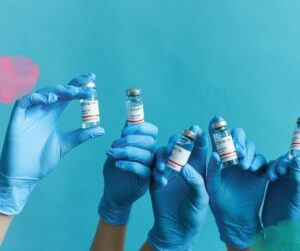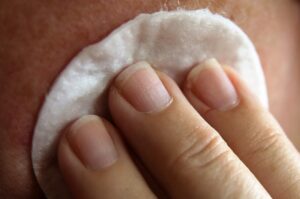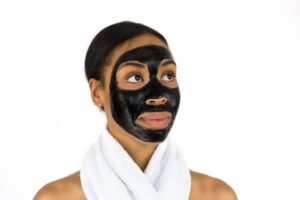Every girl’s dream growing up is to ‘get old enough to be able to apply makeup and use quality cosmetic products for a flawless skin and that extra glow’.
However, that does not happen for everyone. When one is unable to afford good cosmetic products, some result to using products ‘equivalent to their pockets’.
This is understandable; however, the use of inferior cosmetic products or excessive use of even quality ones have adverse effects on both humans and the environment.
New research has shown that the average woman uses no less than about 16 beauty products every day. From the facial scrub that goes up first, the lipstick we use before we head out, to the facial cleanser that we use last before going to bed.
There’s are a lot of cosmetics in between such as: skin moisturizers/lotion, perfumes, hair colours, nail polish,lipsticks, eye liners, shaving creams etc.
The human skin is said to be able to absorb about 60% of what we put on our skin (children absorb more).
The United States Food and Drug Administration (FDA) defines cosmetics as the “articles intended to be rubbed, poured,sprinkled, sprayed on, introduced into or otherwise applied to the human body for cleansing, beautifying, promoting attractiveness or altering the appearance”.
Cosmetics are different from drugs because the sole purpose of drugs are to mitigate, treat and cure diseases. Just like drugs have side effects, so do cosmetics.
People are familiar with the immediate and short-term effects of cosmetic products such as eye or skin irritation and other allergic reactions.
Most times when the use of the products that cause irritations are stopped, the reactions stop as well.
Some researchers claim that cosmetics do not have long term harmful effects being that the products are tested before produced in large quantities. However, some studies show that usage of cosmetics in large amounts or higher concentration have adverse health effects.
Let’s talk about makeup products, women are often attached or addicted to their makeup kit as some cannot go outside their houses without it.
But have they considered the chemical compositions of these cosmetics and how it is safer to use in minimal quantities,occasionally as well?
For example, a lot of the big brands that produce lipsticks fail to mention that Lead (Pb) is found in the mixture and can lead to miscarriages and reduced fertility in women.
Most cosmetics have Parabens found in them which are said to cause breast cancer and damage the nervous system. Phthalates are present in fragrances and cause a disruption to the endocrine system as well as reproductive abnormalities.
Cancer Risks?
Formaldehyde releasing preservatives commonly found in pressed powders, mascara and eye liners are potentially carcinogenic, meaning it can cause cancer.
Shaving cream – damages to the skin
Eye makeup – Glaucoma, eye irritation
Nail polish – damage to the nails
Some other negative health effects of excessive makeup products are acne, wrinkles, infections, skin itch, blisters etc.
Environmental Effects of Cosmetic Products
This and so much more can cause severe damage to the body and in general ageing of the skin. The health effects of cosmetic products are evident, but have we ever wondered the effect it has on the environment.
1. Microbeads: which are those tiny balls in facial scrubs and toothpaste are made of polyethylene, polystyrene or polypropylene.
They have a giant impact on the environment because when they are washed from the face, they go down the drain into the sewage system.
Due to their tiny structure, they pass through into the canals and end up in rivers or larger water bodies. Thereby causing plastic pollution which was talked about in a previous article to be the new cancer of the environment.
2. Packaging: A lot of the plastic bottles and tubs used for packaging end up in landfills causing land pollution.
The hard nature of the tubs or plastics which are to ensure they can withstand the content inside are non-biodegradable, meaning they stay in the environment for thousands of years.
3. The chemical substances used in makeup and other cosmetics do not break down (non-biodegradable). They accumulate in the ecosystem and cause pollution for both humans and animals.
This is not to preach against the use of makeup
or cosmetic products, everyone needs at least a few of them.
This is a wake up call for those that use in large amounts, every day. It is not healthy, and it
also affects the environment.
What to do
A few steps to ensure we are safe, as well as the environment are:
A. Consumers should educate themselves about the best products for them.
B. Use organic products such as Aloe Vera and coconut oil.
C. Makeup should not be an everyday thing. Allow your bare face to breathe and detoxify if possible.
D. Abstain from using inferior products because you are trying to save money. Safety comes first, then quality second.
E. If you notice you are reacting to a certain product, desist from using it no matter the cost of purchase.
F. If it damages your skin, please see a dermatologist to be safe.













